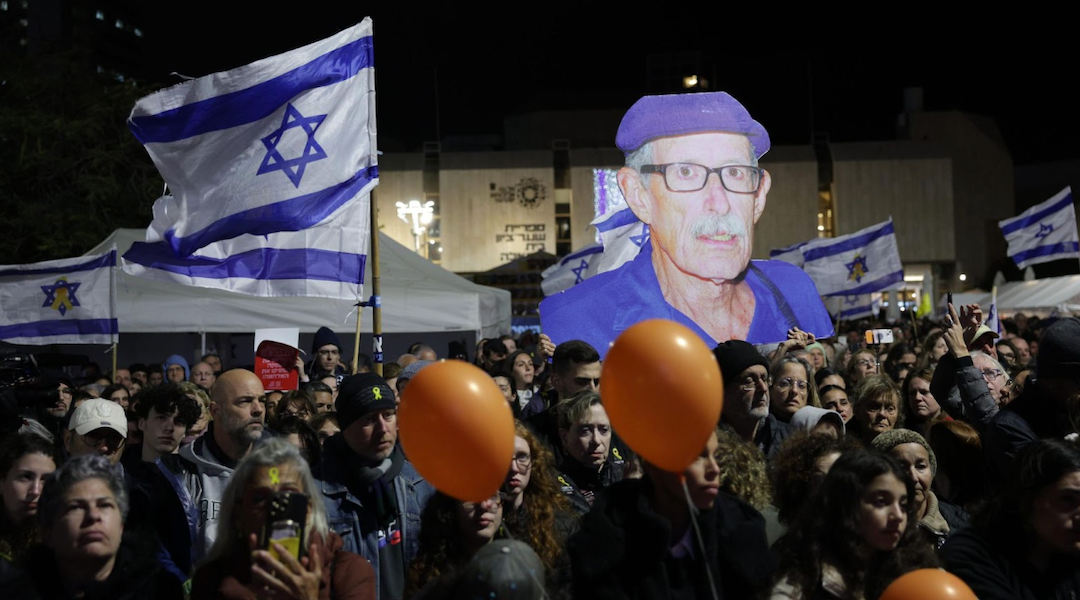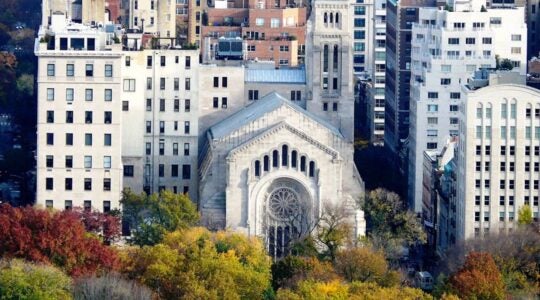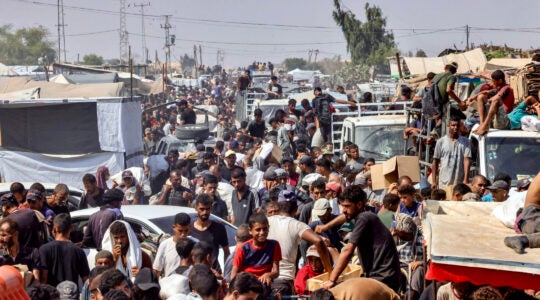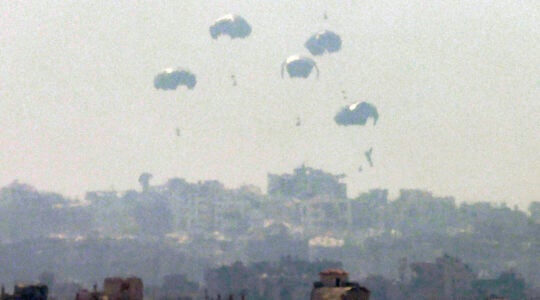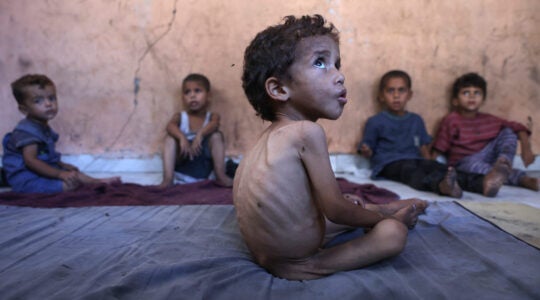Thousands of Israelis flooded Hostages Square in Tel Aviv on Thursday evening, their grief echoing in silence and sobs in a ceremony marking the return of the bodies of four hostages earlier in the day.
Several well-known Israeli artists and public figures took part in the ceremony, including popular singers Omer Adam, Ivri Lider and Hanan Ben Ari. Family members of the hostages also spoke, and a moment of silence was held for the four returning hostages: Shiri Bibas, her young sons Ariel and Kfir, and Oded Lifshitz.
Yael Adar, mother of Tamir Adar, who was killed during Hamas’ Oct. 7, 2023 attack while defending Nir Oz, and whose body is being held in the Gaza Strip, called on the crowd to demand that all hostages, living and dead, return by Israel’s Memorial Day, a solemn occasion that falls in late April this year, calling it her son’s “last will and testament.”
Nir Oz was also the home of the four deceased captives returned to Israel on Thursday.
In the square, a giant image of Lifshitz was held up by the crowd. Lifshitz’s body had been brought earlier in the day, together with what are believed to be the bodies of Shiri Bibas and her sons, to the Abu Kabir Forensic Institute in Tel Aviv.
Forensic analysts determined that Lifshitz, a journalist and peace activist who was 83 when he was abducted, was killed over a year ago. He was the first of the four to be formally identified, a “bitter” moment, according to his family, who said in a statement that they “had hoped and prayed so much for a different outcome.”
The three members of the Bibas family were still undergoing official identification, a process that could take up to two days, Chen Kugel, the head of Abu Kabir, told reporters. A range of methods can be used to determine the cause and time of death, Kugel said, including X-rays, weight comparison, dental records and DNA analysis.
“We will do our best, but identification is not always possible for remains that arrive after a long period of time,” Kugel said. “In any case, we will do everything we can to provide families with clarity about what happened to their loved ones.”
Yarden Bibas, 35, who was separated from his wife and children and taken hostage on Oct. 7, was released just over two weeks ago.
The ongoing pain of some hostage families mixed with the grief that coursed through the gathering. American-Israeli Ruby Chen, whose son Itay was killed on Oct. 7, said he and other hostage families were unable to move “past the trauma to reach the stage post-trauma.” Itay’s body remains held captive in Gaza.
He said, “With us it’s this prolonged trauma and you don’t see the ending in sight. Is it going to be two hours, two days, two months or two years? That inability to even be able to pace yourself. It’s so difficult.”
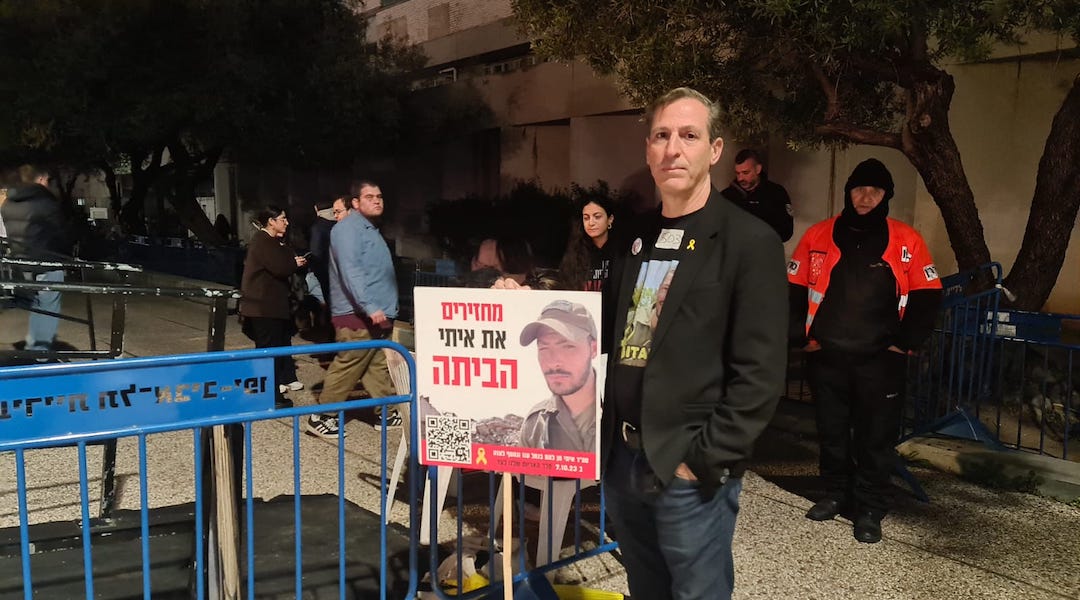
Ruby Chen, father of hostage Itay Chen. (Deborah Danan)
Also present was Elchanan Danino, father of Ori Danino, who was among the six hostages murdered by Hamas last summer. As he waited to take the stage in the tent reserved for the hostage families, he commented on the length of time the families of the slain hostages who returned Thursday were forced to wait until they received news of their loved ones.
“They waited 175 days longer than we did,” he said.
“I told my family from the first day, pray for one thing: for us not to turn into the Shalit family,” he added, referring to the family of Israeli soldier Gilad Shalit, who was captured in 2006 and kept in Hamas captivity for five years before being released in a hostage deal in 2011.
Maayan Slama said she came to the square to pay her last respects and to make it clear to the world that “we can’t take it anymore.”
“Today made the hard truth even sharper: There is no more time,” she said. “They went in there alive and came out dead.”
Shiri Molot said today was a “microcosm of all the grief that has happened until now.”
“I’m not mourning only these four. They echo out to everything else in this whole insane situation — the rest of the hostages, the civilians killed, the soldiers killed, the evacuees, all of it.”
Chen called out Jewish leaders and organizations, including the Conference of Presidents of Major American Jewish Organizations, which is in the midst of a leadership mission to Israel, as well as the pro-Israel lobby AIPAC, for what he called their insufficient efforts on behalf of the hostages.
“How much do we hear their voices?” he said. “It’s not enough to say, ‘Oh, we give money.’”
Chen said that if there was one figure the hostage families could look to for intervention, it was President Donald Trump. He said that sentiment did not “reflect well on the Israeli government.” And he added that Hamas seems to see the abduction of U.S. citizens as a strategic advantage rather than a deterrent.
“Hamas viewed them as an asset, not a liability,” Chen said. “Knowing that terrorist organizations can leverage hostage-taking should be very concerning for any US citizen traveling abroad.”
Some people in the square felt that the day’s tragic news also offered a measure of closure.
“I guess at least now we know,” said Nataly Peleg. “I think it would have been so much worse if we would have remained in limbo. I would never be able to stop thinking about them, wondering if they were alive or dead, or maybe that Shiri was dead and the boys were being raised as Muslims. The questions could have haunted us forever.”
A few minutes’ walk away, in front of the Tel Aviv military headquarters known as the Kirya, a very different scene unfolded, where protesters chanted slogans such as “All of us are hostages, don’t kill us,” to the beat of drums.
Or Baruch, one of the protesters, held a sign featuring an image of Israeli hostage Hisham al-Sayed with a yellow ribbon and the number 3,604, representing the number of days al-Sayed has been in Hamas captivity since entering Gaza of his own accord in 2015. Al-Sayed is scheduled to be released on Saturday along with five other living hostages.
Baruch said it was more important for him to be at the Kirya protesting than around the corner mourning.
“This is where I can have the most influence,” he said. “People see that we’re not giving up the fight.”
JTA has documented Jewish history in real-time for over a century. Keep our journalism strong by joining us in supporting independent, award-winning reporting.
